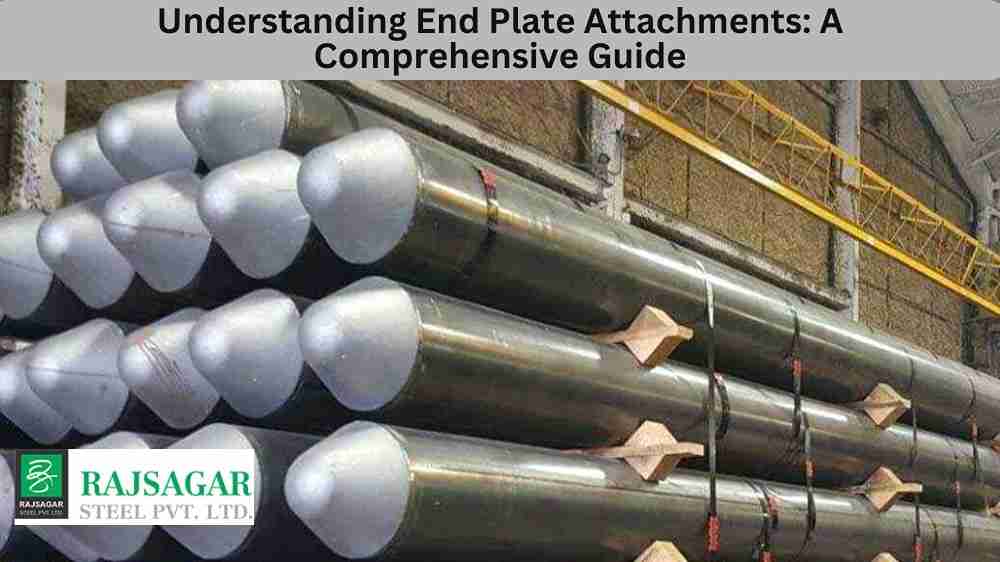Structural engineering is replete with details that matter—a holistic sophistication that goes beyond large beams, columns, and imposing metal structures. At the core of these marvels are end plate attachments, a critical yet often underrated component whose role is pivotal in ensuring the stability and strength of the overall structure.
In this guide, we dive deep into what end plate attachments are, why they’re used, and how their application makes a difference in various construction scenarios. Whether you’re an aspiring engineer, a seasoned professional in the construction industry, or someone with a keen interest in the nuts and bolts that hold our buildings together, this blog post is tailored to expand your understanding and appreciation for these essential components.
What are End Plate Attachments?
End plate attachments are a type of connection used in steel structures where a steel plate is welded to the end of a beam or column. This plate then facilitates the connection to other beams, columns, or support structures, typically through bolting. End plates can vary significantly in size, thickness, and hole configuration depending on the demands of the structure they serve.
Importance of End Plate Attachments
The primary purpose of an end plate attachment is to provide a secure and stable connection point between different structural elements. These connections are integral to transferring loads throughout the framework of a building, bridge, or any steel structure, ensuring that each element performs its function without risking the integrity of the structure.
Types of End Plate Attachments
End plate connections can be categorized based on their functionality and design. Common types of end plate connections include:
- Flush End Plates: Used when the beam needs to be flush with the edge of the column.
- Extended End Plates: Protrudes beyond the width of the beam and can accommodate more bolts, which distributes the load over a larger area.
- Stiffened End Plates: Reinforced with additional plate elements to handle higher moments and shear forces without deformation.
- Unstiffened End Plates: Typically lighter and used when the connection is subject to lower force demands.
Design Considerations
When designing end plate attachments, several factors need to be considered to ensure proper functionality:
- Load Conditions: The end plate must accommodate axial, shear, and moment forces based on the building’s design requirements.
- Bolt Quantity and Arrangement: This affects the force distribution through the connection.
- Plate Thickness: Must be sufficient to handle the stresses without yielding or buckling.
- Welding Specifications: The welding process and size must be suitable to fuse the end plate securely to the beam or column, avoiding any weak links in the connection.
Installation Process
The installation of end plates is typically carried out as follows:
- The fabricator’s workshop welds end plates to the beam or column ends.
- Once the welded element arrives on-site, it is hoisted into position with cranes.
- The end plate is aligned with the corresponding connecting elements.
- Bolts are inserted through the pre-drilled holes and tightened to the specified torque, completing the connection.
Applications of End Plate Attachments
End plate attachments are employed in various constructions, including multi-story buildings, bridges, and industrial structures. Their adaptability to different sizes and shapes makes them an efficient choice for modular construction and structures requiring adjustable, temporary, or movable connections.
Maintenance Considerations
Regular inspections should be conducted to identify any indications of wear, corrosion, or loosening bolts to ensure the longevity and performance of end plate connections. Adequate maintenance ensures that the integrity of the connection remains intact throughout the structure’s life cycle.
Conclusion
End plate attachments are more than just a standard detail in the engineering blueprint—they are the unsung heroes that ensure safe, secure, and reliable connections throughout a structure. By understanding their types, uses, and importance, engineers can efficiently incorporate them into their design, leading to stronger and more resilient structures.
While this post offers insight into structural connections and end plate attachments, continuous learning and staying updated with industry standards are vital for applying them effectively. Just as a building stands firm through the strength of its connections, so does an engineer’s knowledge through the depth of their understanding.

